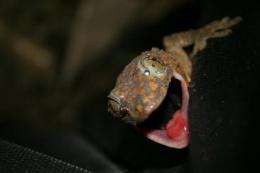Report shows US wildlife trade poorly regulated

Wildlife imports into the United States are fragmented and insufficiently coordinated, failing to accurately list more than four in five species entering the country, a team of scientists has found. The effect, the scientists write in a paper in this week's issue of Science, is that a range of diseases is introduced into the United States, potentially decimating species, devastating ecosystems and threatening food supply chains and human health.
The research by Brown University, Wildlife Trust, Pacific Lutheran University, the Centers for Disease Control and Prevention, and the Global Invasive Species Programme comes as Congress begins deliberating the Nonnative Wildlife Invasion Prevention Act (HR 669), which would tighten regulations on wildlife imports. At a hearing last week before the House Natural Resources Committee, Subcommittee on Insular Affairs, Oceans and Wildlife, wildlife experts discussed how nonnative species and plants can disrupt ecosystems. One case mentioned at the hearing involves the Burmese python, originally imported as a pet that now infests the Florida Everglades.
The global wildlife trade generates hundreds of billions of dollars annually. The team analyzed Law Enforcement Management Information System (LEMIS) data gathered by the U.S. Fish and Wildlife Service from 2000 through 2006 and found the United States imported upward of 1.5 billion live wildlife animals. The vast majority of the imports were from wild populations in more than 190 countries around the world and were intended for commercial sale in the United States — primarily in the pet trade.
"That's equivalent to every single person in the U.S. owning at least five pets," said Katherine Smith, assistant research professor in the Department of Ecology and Evolutionary Biology at Brown University and a co-author on the paper.
"That's over 200 million animals a year — unexpectedly high," said Peter Daszak, president of Wildlife Trust and a co-author on the paper.
The team also found that more than 86 percent of the shipments were not classified to the level of species, despite federal guidelines that mandate species-level labeling. The lack of accurate reporting makes it impossible to fully assess the diversity of animals imported or calculate the risk of nonnative species or the diseases they may carry, the team wrote.
"Shipments are coming in labeled 'live vertebrate' or 'fish,'" Daszak said. "If we don't know what animals are coming in, how do we know which are going to become invasive species or carry diseases that could affect livestock, wildlife or ourselves?"
"The threat to public health is real. The majority of emerging diseases come from wildlife," said Smith, who is also a senior consultant at Wildlife Trust. "Most of these imported animals originate in Southeast Asia — a region shown to be a hotspot for these emerging diseases."
The team called for direct and immediate measures to decrease what it has termed "pathogen pollution" — the risks associated with poorly regulated wildlife trade. Specifically, the team recommended:
- requiring stricter record keeping and better risk analysis of animal imports;
- establishing third-party surveillance and testing for both known and unknown pathogens at points of export in foreign countries;
- educating individuals, importers, veterinarians and pet industry advocates to the dangers of diseases transmitted from wildlife to humans and domesticated animals.
Source: Brown University (news : web)














